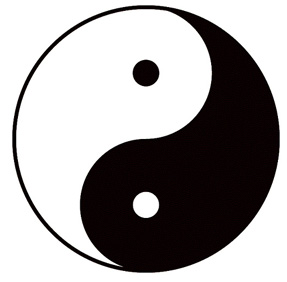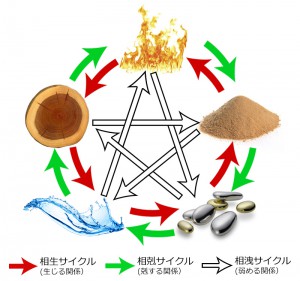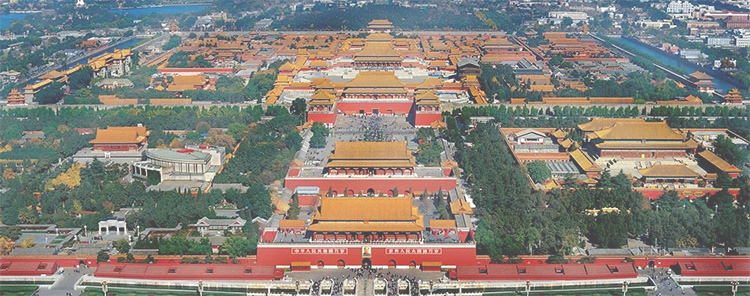
Feng Shui originated in China and its history is said to be 3000 years even 4000 years. This is truly a crystallization of the knowledge and experience built upon the observations and researches of many scholars and Feng Shui masters through its long history. In one word, we can say it is ancient China’s wisdom regarding the natural environment.
Feng Shui is very theoretical, logical and disciplined, and through practice, you can learn the art. Reading methods are based on taking the individual’s date of birth, the environment of the building and its surroundings, and the concept of time that stems from the solar system’s movements. Considering these factors, the home or building’s favorable or unfavorable orientation is calculated and improved, therefore, Feng Shui can be called the art of opening up favorable circumstances as well.
In China, there is a concept called the Chinese Five Arts, which is a manifestation of Eastern fortune telling. This systemized metaphysics is a generic term for ‘Astrology, Divination, Appearance, Medicine and Mountain’, and includes Feng Shui as one of the representations.
「Astrology」 represents inherent destiny …………eg. Four Pillars, Zu Wei Dou Shu
「Divination」 represents things and situations……eg. Yi Jing, Qi Men Don Sha
「Appearance」 represents shapes and features……eg. Face/Palm Reaing, Feng Shui
「Medicine」 represents Eastern Medicine……………eg. Chinese Medicine, Accupuncture
「Mountain」 represents the practice of the mind and body………eg. Meditation, Qi Gong
 What is Qi? There is a famous clause in the “Sousho” written by a scholar called Kakuhaku during the Shin Dynasty. It says that “Qi disperses when the wind blows and in the water, it gathers”. In other words, “Water stores Qi and wind disperses it”. “Qi” can be represented as the energy or nutrients of life force. Feng Shui skillfully uses such “Qi” in the environment. For example, in a house where the flow of “Qi” is bad, you feel uncomfortable, plants die, and animals and residents might get sick often. Conversely, in houses where you can feel the “Qi” just like the smell of spring, we see happy, healthy families and prosperity. Many people may come to visit such homes. As “Qi” can become unbalanced in our bodies making us sick, in buildings, “Qi” exist as well. It is important that this “Qi” is balanced. As Feng Shui takes harmony as its foundation, an important point is to have “Qi” harmonized as well. The notion of the balance of such “Qi” flow gave birth to the “Yin Yang” theory that is explained next.
What is Qi? There is a famous clause in the “Sousho” written by a scholar called Kakuhaku during the Shin Dynasty. It says that “Qi disperses when the wind blows and in the water, it gathers”. In other words, “Water stores Qi and wind disperses it”. “Qi” can be represented as the energy or nutrients of life force. Feng Shui skillfully uses such “Qi” in the environment. For example, in a house where the flow of “Qi” is bad, you feel uncomfortable, plants die, and animals and residents might get sick often. Conversely, in houses where you can feel the “Qi” just like the smell of spring, we see happy, healthy families and prosperity. Many people may come to visit such homes. As “Qi” can become unbalanced in our bodies making us sick, in buildings, “Qi” exist as well. It is important that this “Qi” is balanced. As Feng Shui takes harmony as its foundation, an important point is to have “Qi” harmonized as well. The notion of the balance of such “Qi” flow gave birth to the “Yin Yang” theory that is explained next.
 In one word, Feng Shui’s basics is represented as the “Five Elements of Yin Yang”. Yin Yang is explained as follows: “(1) In Chinese fortune telling, it is Qi that creates everything in the universe and dominates it with its two opposing characteristics. The outgoing one is Yin and the inward-looking one is Yang. The sun, male, odd numbers are Yang whereas the moon, female, even numbers are Yin. (2) Electromagnetic/electric negative pole and positive pole” (from Iwanami Japanese Dictionary). Perhaps a good example is the front and back of a coin. Without the front, the back does not exist and without the back, the front does not exist. In other words, Yin Yang is mutually dependent and without one, the other cannot exist.
In one word, Feng Shui’s basics is represented as the “Five Elements of Yin Yang”. Yin Yang is explained as follows: “(1) In Chinese fortune telling, it is Qi that creates everything in the universe and dominates it with its two opposing characteristics. The outgoing one is Yin and the inward-looking one is Yang. The sun, male, odd numbers are Yang whereas the moon, female, even numbers are Yin. (2) Electromagnetic/electric negative pole and positive pole” (from Iwanami Japanese Dictionary). Perhaps a good example is the front and back of a coin. Without the front, the back does not exist and without the back, the front does not exist. In other words, Yin Yang is mutually dependent and without one, the other cannot exist.
”Yin” is passive, silent and represents the waterfall (water) flowing down. The opposite is “Yang”, which is active, full of vitality and is represented by the heat rising. However, within Yin Yang, there exists smaller, different Yin Yang. In other words, it is balance. Such a Yin Yang’s correct image is the one above. The heat rises and cools, comes down and becomes the basis for the foundation. This Yin Yang is a very important theory and the more you study Feng Shui, the more you will feel certain on how important it is to come back to this basic theory.
 The Five Elements is explained as follows: “(1) According to an ancient Chinese doctrine, it is the 5 basic elements. The 5 ingredients necessary for people to live. In addition, this is the principle that explains the universe or everything about life. Generic term for Wood, Fire, Earth, Metal, and Water” (Iwanami Japanese Dictionary). The Five Elements can be said to represent the Qi’s natural principles. Including the Five Elements, there are naturally occurring patterns in the universe such as the five senses, five feelings and five barriers. The Five Elements of Wood, Fire, Earth, Metal and Water can each strengthen or weaken the “Qi’ that influences the environment. These Five Elements are systemized and functions mutually while each one affects one another. Let me explain the three cycles that become the basis for this.
The Five Elements is explained as follows: “(1) According to an ancient Chinese doctrine, it is the 5 basic elements. The 5 ingredients necessary for people to live. In addition, this is the principle that explains the universe or everything about life. Generic term for Wood, Fire, Earth, Metal, and Water” (Iwanami Japanese Dictionary). The Five Elements can be said to represent the Qi’s natural principles. Including the Five Elements, there are naturally occurring patterns in the universe such as the five senses, five feelings and five barriers. The Five Elements of Wood, Fire, Earth, Metal and Water can each strengthen or weaken the “Qi’ that influences the environment. These Five Elements are systemized and functions mutually while each one affects one another. Let me explain the three cycles that become the basis for this.
Each cycle becomes the key to understanding how harmony can be attained by using the Five Elements. If the Qi is harmonized, relationships, health, and wealth will be abundant. If there is conflicting relationship, it is easier to have problems. That is why an improvement called Remedy becomes necessary. Such remedies can be indoor plants, lamps, potteries or ceramics, metal or brass, or fish tanks. You cannot randomly use these remedies. If you use them in a wrong way, harm can be caused in relationships, health and monetary luck. By using this in a proper way will it become good.
When you write or read maps, you know that North is on the top. But in Feng Shui, South is on top. The sun shines on us at the top of our heads, therefore, North comes underneath.
During Feng Shui readings, we use a compass. This uses electromagnetic fields to judge orientations. We do not rely on floor plans. There is a slight discrepancy between the True North that a floor plan indicates and the Electromagnetic North that the compass (Luo Pan) points to. Please refer to consulting procedures for more details.
A natural phenomenon modeled on the Eight Phenomena is called the Eight Trigram. This is represented with 3 broken or solid lines consisting of Xun, Li, Kun, Dui, Chien, Kan, Ken, and Zhen. Yi Jing combines the Eight Trigrams into Sixty Four Trigrams and uses it to tell fortune.
Each trigram has attributes that represent the Five Elements, color, body parts and the person. Furthermore, orientation can be represented with numbers. This is the chart on the left. The vertical, horizontal and diagonal add up to 15. This is called the Pre-Heaven Eight Trigram representing the balance of the universe.
The world we live in is the Post-Heaven Eight Trigram and this balance is destroyed. Therefore, Feng Shui is necessary to act as the harmonizer of this balance.


